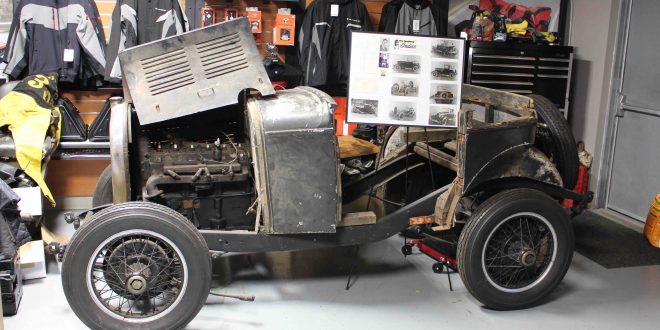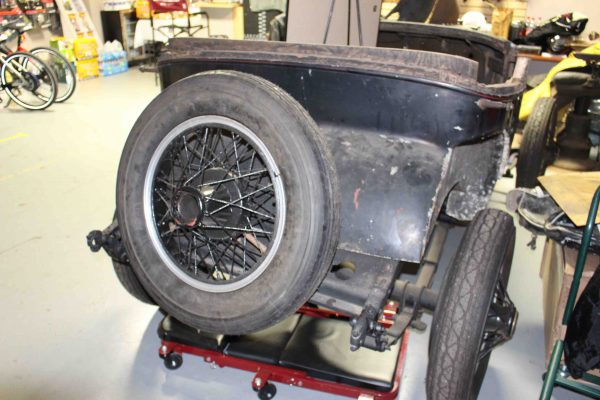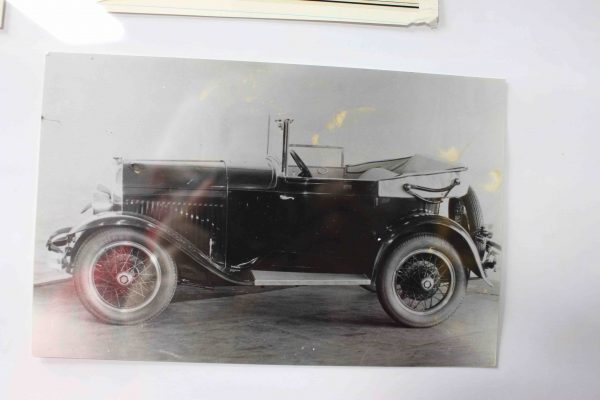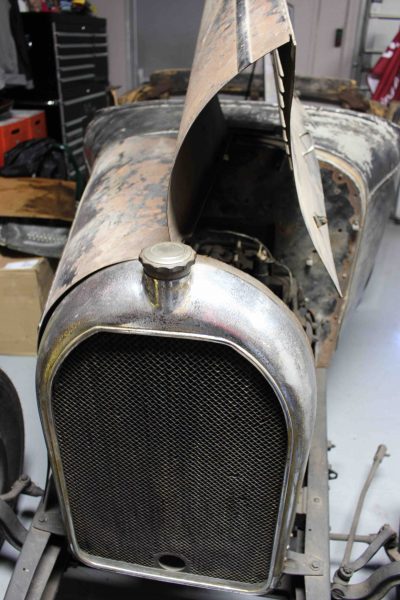WESTFIELD, MA – If it seemed at all odd when Polaris Industries, maker of Indian motorcycles, came out with the Slingshot roadster three years ago, it was really a case of history somewhat repeating itself, and with a good deal more success.
 The three-wheeled, belt-driven Slingshot is really more automobile than motorcycle as it has a steering wheel, side-by-side bucket seats and a stick shift in a console. Polaris may still call it a motorcycle, but from an observation standpoint, it’s really a car. And that’s where deja vu comes in.
The three-wheeled, belt-driven Slingshot is really more automobile than motorcycle as it has a steering wheel, side-by-side bucket seats and a stick shift in a console. Polaris may still call it a motorcycle, but from an observation standpoint, it’s really a car. And that’s where deja vu comes in.
Are you aware that the original Indian motorcycle company, which operated in Springfield, MA from 1901 to 1953, once took a stab at car-building as well?
The current-day Indian Motorcycle of Springfield dealership in nearby Westfield (which also sells Slingshots) last month acquired one of only four Indian cars ever built and now has it on display in advance of restoration.
First, some background:
Hard as it might be to imagine today, but early in the 20th century dozens of motorcycle manufacturers existed in the U.S., including at least one in Connecticut. The Schickel Motorcycle Company built motorcycles in Stamford, CT from 1911 to 1924. At the peak in 1903, some 70 companies produced motorcycles nationally. That number plummeted to just two by the time the Depression took hold – Harley-Davidson and Indian.
The main reason for the sudden decline in the popularity of motorcycles was competition, notably the Model T from Ford. The Tin Lizzie was introduced in 1908 with a price tag of $825. A shift to assembly line production enabled the price to eventually drop to an affordable $260 by 1925 – much less than what a typical motorcycle cost. Quite understandably, motorcycles were replaced as the public’s preferred transportation mode, reduced from essential to recreational status.
Why wobble on two wheels when the comfort of four wheels costs less and provides room for the entire family away from the elements?

While Indian was a major player in motorcycles, it nonetheless contemplated getting into car-making to boost revenue during a period of financial hardship. Dennis Bolduc, owner of Indian Motorcycle of Springfield and a vintage Indian enthusiast, explained that Indian’s interest in possibly branching out began in 1926 when the company purchased two cars for study purposes.
A management shakeup at Indian in 1927 and a formal vote by the board of directors to invest in new enterprises got the process moving. Four experimental cars were built – the X1, X2, X3 and X4. (Bolduc said there also an X5 chassis that was never completed.)
The X1 was made with “chicken wire” and was powered by an Indian motorcycle engine. It eventually vibrated apart, Bolduc said. The other three received auto motors built outside the company. It’s the X2 that Bolduc bought. Jay Leno owns the X3, while the X4 can be seen at the Lyman and Merrie Wood Museum of Springfield History in Springfield.
Indian’s hope was to build a high-performance commuter car that was easy to drive and comfortable, and the X2 coupe that now sits in a room in back of the showroom certainly has a sporty profile. “I’ve been chasing it for four years,” said Bolduc. “I’m going to do a preservation on it. It’s going to be a long timetable; at least a year, year-plus.”
Some portions, such as the decaying wood skeleton over which the body panels are attached, will be replaced. Others parts, such as those body panels, which are painted black with red pin-striping, will be kept as-is. “The doors are mint. The glass is perfect,” said Bolduc.
Indian didn’t do all the work on the experimental cars. Chassis construction was done in Springfield, but body design and implementation on the X2 was farmed out. The chassis was shipped to Bridgeport, CT to a company called LeBaron, known for doing high-end designs for automakers like Packard, Lincoln, Cadillac, Pierce-Arrow and Stutz.
According to auto historian Mark Theobold, LeBaron likely got the order from Indian due to proximity and speed. “They were consistent, top of the line. They just happened to be in that area,” said Theobold, who lives in Holland Patent, N.Y. and sells die-cast cars through motorlibrary.com.
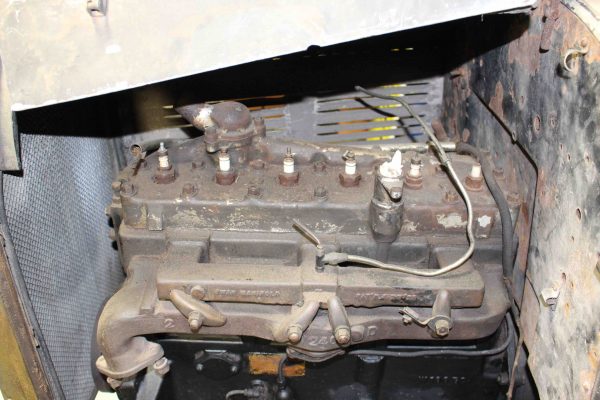
The two-seater X2 was completed in 1928. It has an 85-inch wheelbase. Under the hood is a six-cylinder, 70-horsepower Lycoming engine. “This was built as a hot rod,” said Bolduc, who is able to trace the line of ownership back to Jack Bauer, who oversaw the experimental car program and was the son of Indian president Louis J. Bauer.
It was then sold to a Pratt & Whitney employee who used it to commute from Springfield to East Hartford. “It was run through World War II,” Bolduc said.
The X2 eventually passed to Everett T. Clegg of Westfield, who passed away in 2012, and has been “sitting in a dilapidated garage.” Bolduc said he heard of it via “word of mouth,” approached the family about buying it and got it for an undisclosed sum.
Bolduc estimated that once the revitalization is done the X2 will be worth “six figures. It’ll be way up there.”
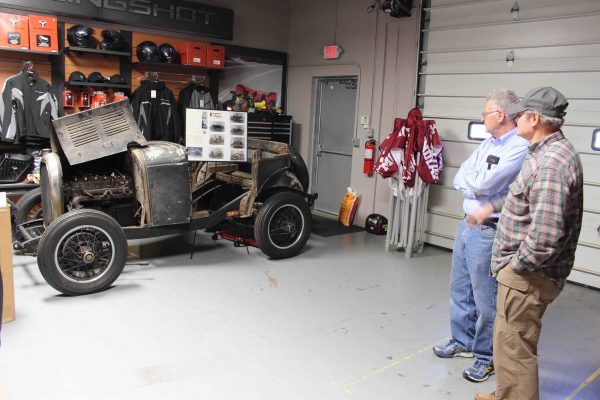
Unlike Polaris’ Slingshot, which has been in production since 2014, Indian’s original attempt at car production never came to fruition. After investing approximately $65,000 and confronted by the stock market crash in 1929, Indian abandoned the car project.
It would be appropriate, though, for Indian Motorcycle of Springfield to display the revived X2 next to a Slingshot.
 Ride CT & Ride New England Serving New England, NYC and The Hudson Valley!
Ride CT & Ride New England Serving New England, NYC and The Hudson Valley!

